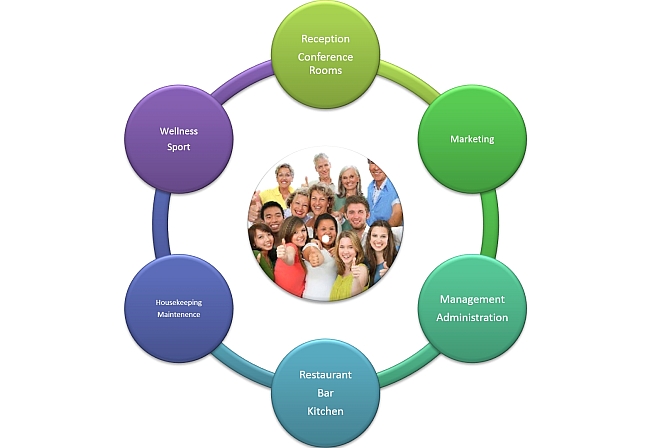In many industries customer centricity is a “new” trend, in others it has been a natural basic for decades.
So let’s have a look at definitions, implications, champion industries, dos and don’ts and the customers!
Almost all companies provide customer service, use quality assurance programs and monitor customer feedback.
However, this does not necessarily mean real customer focus. Because convenience and ease of use for customers are often sacrificed. For lower costs, faster production processes, easier packaging and storage, or more beautiful designs.
Often the finance, production, research and development and logistics departments have little information and even less interest in end users. Only marketing, sales and customer service are “responsible” for customer centricity.
However, customer centricity means that the customer (not the organisation) is at the centre of all activities.

A holistic strategy
The hospitality and tourism sectors are by nature champions when it comes to customer centricity.
Destinations, hotels, restaurants, cruise ships etc. could not be successful without a strong focus on their customers.
It starts with the internal organisation: It is based on the expectations and needs of the customers – not on the needs of employees, managers, owners or shareholders! All people in a company must think and act customer-oriented in this sense. Empathy and a general love for people helps.
However, a customer-oriented KPI system for as many departments as possible is crucial. Make sure to remunerate customer-centric employees!

For his airline “Lauda Air”, the late Niki Lauda opted for the claim “Service is our success”. A courageous statement indeed.
But very successful, because he kept his promise:
Meals from the best caterer in town, high-quality drinks, a super-friendly crew, flawlessly clean aircraft and washrooms – even on long-haul flights.
Every single negative passenger comment was a matter for the boss: customer satisfaction below 95% was unacceptable.
Today, customers can make a product really successful with comments on social media and rating platforms. But the opposite can also happen. Consumers trust such platforms with peer comments much more than the best message from the company.
Hotels and airlines were among the first to feel the results of publicly available ratings. And at first they hated it!
But it soon became clear that concerns about “fake” or “unfair” comments were unnecessary. Hundreds of reviews and comments on platforms like TripAdvisor or booking.com usually reflected a fair perception.
Excellent performance is now rewarded with more bookings and higher revenue. Lousy providers get into trouble, even if they have a nice website or low prices.

More revenue with customer centricity
Today such customer reviews are professionally managed and used for marketing, quality assurance and employee reviews.
Customer comments also provide valuable insights into the strengths and weaknesses of a service or product – free of charge and honest!
Reasons for purchasing are volatile and as varied as the potential customer.
However, one factor always comes first with most customer groups: Convenience!

Needing a magnifier to read information – what about more customer focus?
Never talk about your “customer centricity” if you can’t meet the expectations this raises:

There is probably still work to be done on customer orientation!
The fact is that people are becoming more and more demanding and less patient.
This makes it harder than ever to meet customer expectations. That’s why true customer focus has become a must. Whether we like it or not. Lobbyists in many industries still see consumer organisations as enemies. And at the same time they claim to be “customer-oriented”.
A contradiction? Yes! A joke? No! but usual practice.
Communicating nature with interactive activities
read moreHow print media gain more reach with accessiblity
read moreZeroCon23 - THE event for the accessibility topic
read more